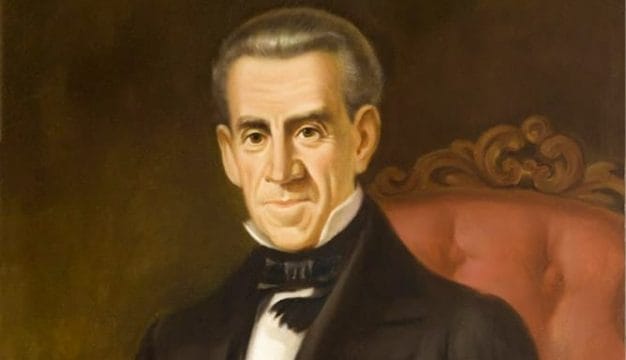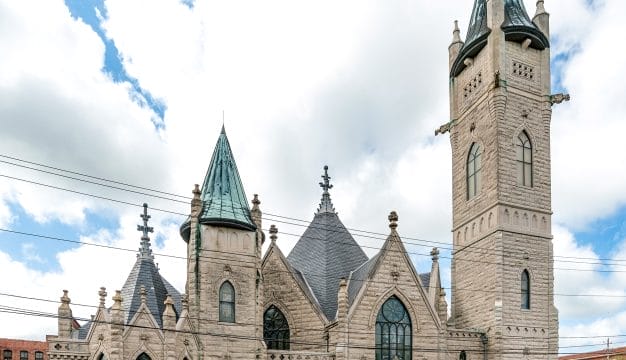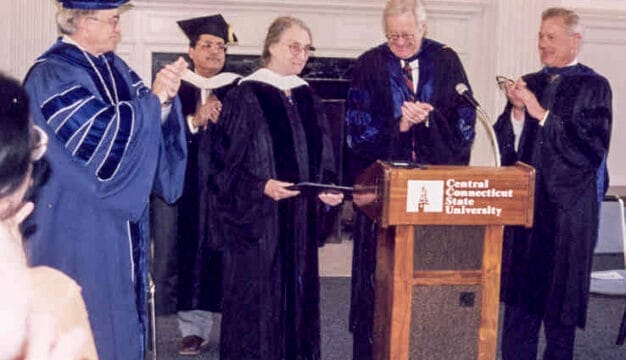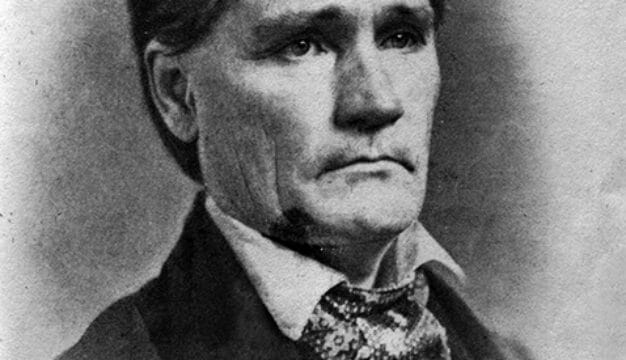Convict-Lease System
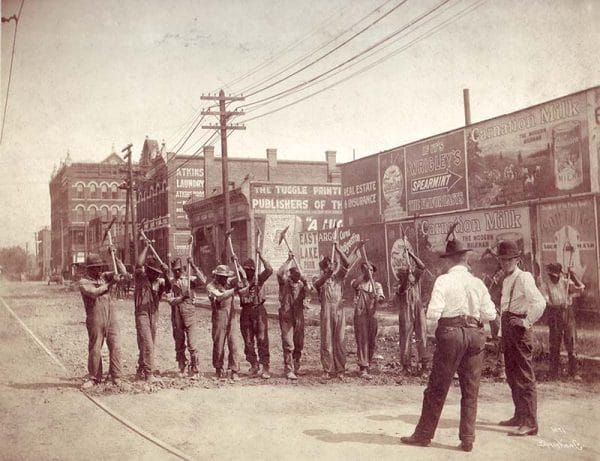 Forced Prisoner Labor in Birmingham
Between 1875 and 1928, the state and counties of Alabama profited from a form of prison labor known as the convict-lease system. Under this system, companies and individuals paid fees to state and county governments in exchange for the labor of prisoners on farms, at lumberyards, and in coal mines. Following their convictions, prisoners were transported directly to the work site and remained there for the duration of their sentences. State prisoners deemed unable to work were sent to the state penitentiary in Wetumpka in Elmore County; after 1888 all women convicts were sent to Wetumpka as well. The Wetumpka site held relatively few prisoners, however. The vast majority of Alabama convicts worked for private enterprises and generated substantial amounts of revenue for the state and counties. By the 1880s, nearly all of the several thousand state and county prisoners working under the convict-leasing system labored in coal mines located around Birmingham.
Forced Prisoner Labor in Birmingham
Between 1875 and 1928, the state and counties of Alabama profited from a form of prison labor known as the convict-lease system. Under this system, companies and individuals paid fees to state and county governments in exchange for the labor of prisoners on farms, at lumberyards, and in coal mines. Following their convictions, prisoners were transported directly to the work site and remained there for the duration of their sentences. State prisoners deemed unable to work were sent to the state penitentiary in Wetumpka in Elmore County; after 1888 all women convicts were sent to Wetumpka as well. The Wetumpka site held relatively few prisoners, however. The vast majority of Alabama convicts worked for private enterprises and generated substantial amounts of revenue for the state and counties. By the 1880s, nearly all of the several thousand state and county prisoners working under the convict-leasing system labored in coal mines located around Birmingham.
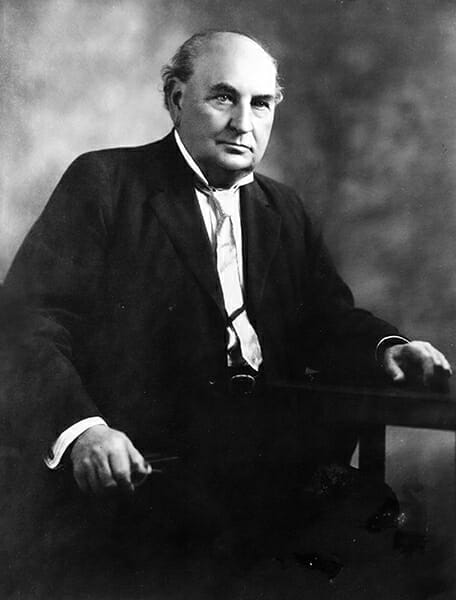 John Hollis Bankhead
The origins of the system are complex. Since antebellum times, prisoners in Alabama had been put to work under the authority of a state warden. After the Civil War, social and political conflicts, poverty, and a racist legal system led to a growing number of African American prisoners in county jails and the state penitentiary. County prisoners convicted of misdemeanors were put to work in factories in the 1860s and at a state-owned farm in the 1870s. State prisoners convicted of felonies worked on railroads, where they suffered extremely high rates of death. Railroad companies did not pay the state for the prison labor they used, although they did save the state money on housing and feeding them. Neither the state nor the counties profited from leasing prisoners until a fiscal crisis in 1875 compelled Alabama to look for new sources of revenue. The state’s warden, John G. Bass, implemented a new policy by which the state leased individual state prisoners to various coal mines, farms, and lumberyards in exchange for monthly payments. Bass ranked prisoners into three classes according to their physical abilities and levels of skill and set fees accordingly. Revenue immediately jumped, and the state made a profit of between $11,000 and $12,000 in the first year. Seeing the financial windfall to be had, county governments began negotiating their own lease agreements with industries. In addition to serving the time imposed as punishment for their crimes, county convicts also had to pay all of their court costs, usually by serving extended sentences. Typically convicted of misdemeanors, these county convicts often served long periods of hard labor in abhorrent conditions because they could not afford to pay the costs of their arrests and trials. In the vast majority of cases, such convicts lived in utter filth, were poorly fed, suffered torture and cruel punishments, and had no protection whatsoever from the labor contractors who hired them. Many of the state’s female convicts performed forced labor on state-run prison farms.
John Hollis Bankhead
The origins of the system are complex. Since antebellum times, prisoners in Alabama had been put to work under the authority of a state warden. After the Civil War, social and political conflicts, poverty, and a racist legal system led to a growing number of African American prisoners in county jails and the state penitentiary. County prisoners convicted of misdemeanors were put to work in factories in the 1860s and at a state-owned farm in the 1870s. State prisoners convicted of felonies worked on railroads, where they suffered extremely high rates of death. Railroad companies did not pay the state for the prison labor they used, although they did save the state money on housing and feeding them. Neither the state nor the counties profited from leasing prisoners until a fiscal crisis in 1875 compelled Alabama to look for new sources of revenue. The state’s warden, John G. Bass, implemented a new policy by which the state leased individual state prisoners to various coal mines, farms, and lumberyards in exchange for monthly payments. Bass ranked prisoners into three classes according to their physical abilities and levels of skill and set fees accordingly. Revenue immediately jumped, and the state made a profit of between $11,000 and $12,000 in the first year. Seeing the financial windfall to be had, county governments began negotiating their own lease agreements with industries. In addition to serving the time imposed as punishment for their crimes, county convicts also had to pay all of their court costs, usually by serving extended sentences. Typically convicted of misdemeanors, these county convicts often served long periods of hard labor in abhorrent conditions because they could not afford to pay the costs of their arrests and trials. In the vast majority of cases, such convicts lived in utter filth, were poorly fed, suffered torture and cruel punishments, and had no protection whatsoever from the labor contractors who hired them. Many of the state’s female convicts performed forced labor on state-run prison farms.
The year 1883 marked a turning point in the emerging convict-leasing system. Under financial reforms championed by Warden John Hollis Bankhead, the state legislature approved a plan that leased the majority of prisoners to a select number of coal operators. The Pratt Coal and Iron Company, the Tennessee Coal, Iron, and Railroad Company (TCI), and the Sloss Iron and Steel Company received almost exclusive rights to the labor of prisoners; in 1888, TCI negotiated a 10-year contract that entitled it to all able-bodied state prisoners. In exchange, TCI agreed to pay the state between $9 and $18.50 per month for each prisoner, depending on their abilities. Under Bankhead’s plan, the coal companies built and operated prisons at the mine sites, which were clustered in the coal-rich areas surrounding Birmingham. The largest prison mines were the Slope 2 and the Shaft mines, operated by TCI in Pratt City, and the Coalburg prison mine, operated by Sloss with county prisoners.
Another change introduced by Bankhead was the creation of a new board of inspectors in 1883. The inspectors were charged with overseeing the treatment of prisoners, checking safety conditions in the mines and other prison-labor industries, and ensuring timely releases of the convicts. None of these duties were carried out in a serious manner, and convicts leased to coal mines suffered the worst death rates of any industry employing prison labor. In 1885, Bankhead left office and the post of warden was abolished. Political novice Reginald H. Dawson, whose brother was a prominent Democrat and gubernatorial hopeful, took charge of the board of inspectors as chief inspector. Dawson proved to be an effective administrator who, along with his two subordinates, physician Albert T. Henley of Marengo County and William D. Lee of Perry County, increasingly used his position to mediate the relationship between the coal companies and the prisoners. The convict-lease system thus became a triangular relationship among the coal companies and smaller contractors, the board of inspectors, and the prisoners.
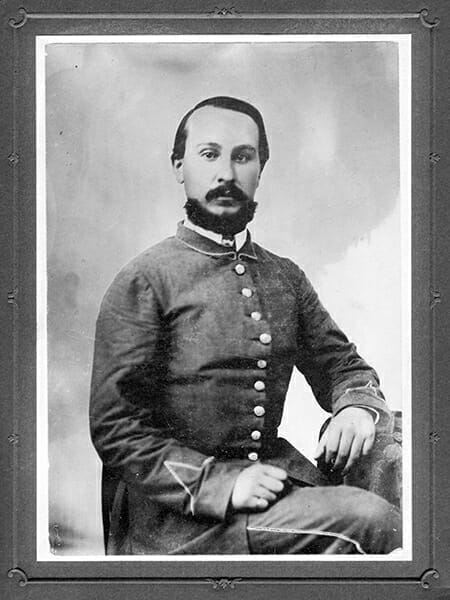 Reginald Dawson
More than 95 percent of county prisoners and 90 percent of state prisoners were African American, and whipping was the accepted norm for punishment. Contractors whipped prisoners for insubordination and trying to escape, but they also used whipping to enforce labor discipline, prompting many to call the system a new form of slavery. The legacy of slavery in shaping the system is also evident when one considers that the earliest prison contractors, men such as John W. Comer and Gaius Whitfield, were former slave owners. Nevertheless, unlike slaves, prisoners could complete their sentences and gain freedom, and many were literate. Furthermore, once they achieved their quota for the day, they were entitled to earn extra cash for working overtime. Their skills as miners enabled them to continue working in the Birmingham vicinity as free men upon their release, and one study estimated that half of all released prisoners did so.
Reginald Dawson
More than 95 percent of county prisoners and 90 percent of state prisoners were African American, and whipping was the accepted norm for punishment. Contractors whipped prisoners for insubordination and trying to escape, but they also used whipping to enforce labor discipline, prompting many to call the system a new form of slavery. The legacy of slavery in shaping the system is also evident when one considers that the earliest prison contractors, men such as John W. Comer and Gaius Whitfield, were former slave owners. Nevertheless, unlike slaves, prisoners could complete their sentences and gain freedom, and many were literate. Furthermore, once they achieved their quota for the day, they were entitled to earn extra cash for working overtime. Their skills as miners enabled them to continue working in the Birmingham vicinity as free men upon their release, and one study estimated that half of all released prisoners did so.
Dawson, Henley, and Lee inspected prisons regularly and implemented many reforms that benefited state prisoners. Under Dawson’s leadership, the board of inspectors reduced workloads and punishments, allowed convicts to send and receive letters, and supported reformer Julia Strudwick Tutwiler‘s innovative prison schools. The inspectors kept track of prisoners’ sentences by issuing them a “time card” that bore the date of their conviction and the date of their release. Prisoners themselves knew when they were due to be released and could alert the inspectors if that date was ignored. The board played an important role in the administration of the state’s convict-lease system and in many ways ensured its stability.
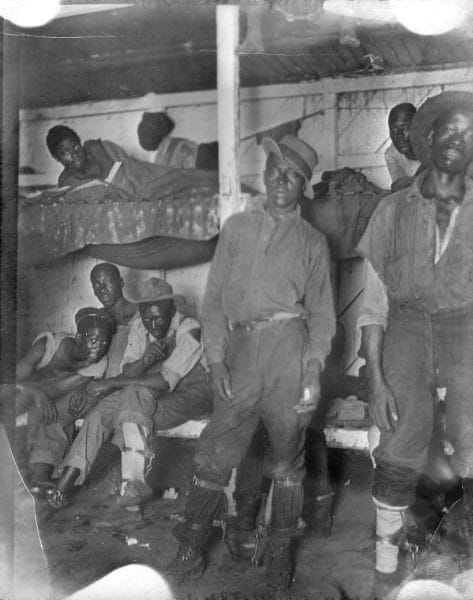 Convicts in Birmingham, 1907
County inmates who worked in the convict-lease system did not receive the same degree of protection, although some prominent Alabamians, including physician Thomas D. Parke, did draw attention to the unsafe conditions under which they worked. In 1895, Parke, who was the health officer for Jefferson County, was hired to produce a report on those conditions. He released a detailed and damning document that cited a death rate of 90 men per 1,000 prisoners at the Coalburg mine, a rate vastly higher than that of any other state. But Parke’s report failed to change the horrendous working and living conditions of county prisoners.
Convicts in Birmingham, 1907
County inmates who worked in the convict-lease system did not receive the same degree of protection, although some prominent Alabamians, including physician Thomas D. Parke, did draw attention to the unsafe conditions under which they worked. In 1895, Parke, who was the health officer for Jefferson County, was hired to produce a report on those conditions. He released a detailed and damning document that cited a death rate of 90 men per 1,000 prisoners at the Coalburg mine, a rate vastly higher than that of any other state. But Parke’s report failed to change the horrendous working and living conditions of county prisoners.
Despite reforms and political outcries, conditions for all prisoners working in mines remained notoriously unsafe. Prisoners worked in mines with high water, falling rock, dangerous gas levels, explosives, and faulty elevators. Added to this were the unrelenting and unrealistic expectations of mining bosses to extract more than the usual quota of coal through coercion or cash incentives from mine owners. Coal officials often faked “bad conduct” reports on prisoners to prolong their sentences and thus keep experienced men in the mine longer. The sick or dying, however, were often sent home. Among state prisoners, the annual death rates ranged between 4 and 5 percent. At the mines for county prisoners, conditions and death rates were much worse in the absence of state regulation. In 1896, state prisoners in the mines numbered 1,710. During the previous two years, 233 men had died. In the same year, 745 county prisoners worked in the mines, and 181 had died during the preceding two years.
Dawson’s efforts toward reform of the convict-lease system included a long-range plan to remove prisoners from mines and employ them on state-controlled farms and in cotton and lumber
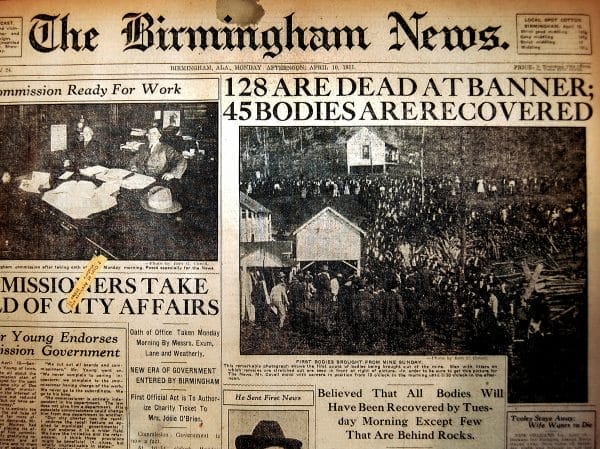 Banner Mine Tragedy
mills. After his retirement in 1896, however, Dawson’s planning efforts were abandoned by his successor, S. B. Trapp, who dismantled the state-run enterprises, kept prisoners working for private companies, and turned a blind eye to whippings and other forms of prisoner abuse. Although a 1901 legislative committee condemned Trapp for poor management and corruption, he remained in his post, and Dawson’s goal of ending prison mining was not achieved. Alabama prisoners remained working in coal mines under horrendous conditions; in 1911 an explosion at the decrepit Banner mine killed 123 African American county prisoners and raised even louder but unsuccessful cries to end the practice.
Banner Mine Tragedy
mills. After his retirement in 1896, however, Dawson’s planning efforts were abandoned by his successor, S. B. Trapp, who dismantled the state-run enterprises, kept prisoners working for private companies, and turned a blind eye to whippings and other forms of prisoner abuse. Although a 1901 legislative committee condemned Trapp for poor management and corruption, he remained in his post, and Dawson’s goal of ending prison mining was not achieved. Alabama prisoners remained working in coal mines under horrendous conditions; in 1911 an explosion at the decrepit Banner mine killed 123 African American county prisoners and raised even louder but unsuccessful cries to end the practice.
In 1912, TCI initiated a new management philosophy and announced that it would employ only free workers in its mines. The state then took over the management of the prison mines, selling the coal they produced directly. That year, prison mining brought in a sum of more than $1 million to the state’s coffers, but scandal and abuse remained endemic to the system. The horrors of the system would prompt a number of legislative efforts to end the practice in ensuing years. In 1924, the death of a prisoner who had been tortured by being lowered into a vat of boiling water prompted an investigation. The Sloss Company continued to work county prisoners at its mines until 1928, but in that year, prison mining and the convict-leasing system finally came to a halt. Alabama was the last state in the nation to abolish convict leasing, following Florida by some five years.
Additional Resources
Adamson, Christopher R. “Punishment After Slavery: Southern State Penal Systems, 1865–1890.” Social Problems 30 (June 1983): 555–69.
Blackmon, Douglas. Slavery By Another Name: The Re-enslavement of Black Americans from the Civil War to World War II. New York: Doubleday, 2008.
Curtin, Mary Ellen. Black Prisoners and Their World: Alabama, 1865-1900. Charlottesville: University Press of Virginia, 2000.
Going, Allen Johnston. Bourbon Democracy in Alabama, 1874-1890. 1951. Reprint, Tuscaloosa: University of Alabama Press, 1992.
Ward, Robert David, and William Warren Rogers. Convicts, Coal, and the Banner Mine Tragedy. Tuscaloosa: University of Alabama Press, 1987.
